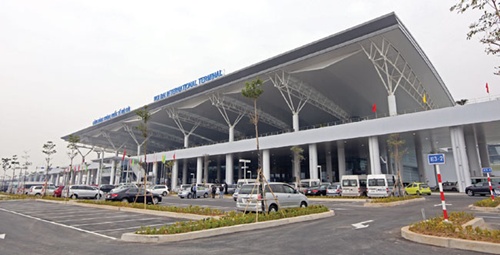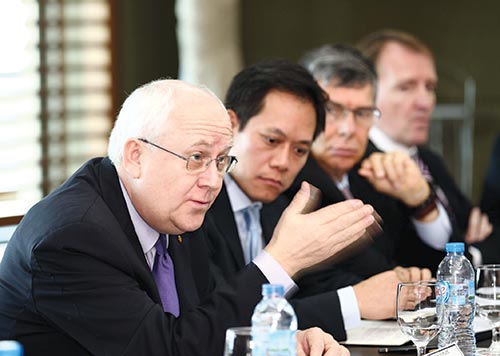Circular will revamp stock market
Circular will revamp stock market
Since its issuance late last year, Circular 36/2014/TT-NHNN, which set limits on how much banks can lend to stock investors, has had a strong impact on both credit institutions and the securities market. Investors fear that the total amount available for margin loans will drop dramatically after the Circular takes effect on February 1.

Chairman of the HCM Stock Exchange, Tran Dac Sinh, shared with the Thoi bao Kinh te Viet Nam (Viet Nam Economics Times) newspaper his opinion on the regulation, as well as this year's development plan for the exchange.
What impact do you think Circular 36 will have on the stock market? What are some solutions to the current difficulty?
The circular, slated to take effect on February 1, sets safe operation limits and new ratios of permitted credit institutions and branches of foreign-owned banks in Viet Nam. This circular puts limits on stock investments and sets the conditions for banks to be able to give loans. We need a longer time to analyse the impact of this circular on the securities market.
Credit institutions play a very important role in the country's economic development, it is its life-line, providing capital to the economy as well as connecting businesses to the market through their credit activities. Therefore, regulations that ensure their safe operation are crucial to the development of both the financial market and the nation's economy.
At present, there are many reports on the probable impact of the Circular 36 on the stock market, and this has a certain effect on investors' psychology. In my opinion, to help investors have a better understanding of the new regulation, relevant authorities should be the ones publishing official data on the securities lending.
To reduce the stock market's reliance on bank lending, we need to develop other investment inflows such as from foreign and institutional investors. To enable this, the regulations relating to foreign ownership need modifying soon and need to further open up our market to new sources.
How did the HCM Stock Exchange's index fare in 2014?
As of December 31, 2014, the benchmark VN-Index rose 8.14 per cent over the previous year. This was much lower than 2013's year-on-year increase of 22 per cent. The market's development accurately reflected domestic economic progress, the East Sea crisis and plunges in global oil prices.
Yet, the exchange also saw some encouraging results. The VN-Index hit 640.75 points on September 3, a peak in the past six years since the global financial crisis in 2008. Liquidity doubled in the year with an average trading value of over VND2.1 trillion (US$98 million) per session, of which trading by foreigners accounted for 12 per cent of the total market value.
The number of new listing registrations and auctions increased, including the participation of big corporations. The launch of the first exchange-traded fund (ETF) on the exchange especially helped diversify products on the market, making Viet Nam one of the most attractive frontier markets in Asia.
The exchange introduced a new index set last year to satisfy investor demand. How has it worked?
The launch of the HOSE-Index set provided investors with more comprehensive information about the different segments of the market and thus increased investment opportunities.
The new index set was welcomed by investors, particularly investment funds. Many funds studied the HOSE-Index and are now prepared to set up new ETFs. In addition, the new indices, which are calculated by an adjusted free-floated ratio, liquidity and other criteria, have overcome the shortcomings of the VN-Index and become a good reference for Vietnam's stock market.
Could you disclose what new products will be launched this year?
In 2015, the exchange will continue to launch the Index sector and Total Return Index. With regard to products like Covered Warrant or the non-voting depository receipt (NVDR), the exchange is quickly working with the State Securities Commission and other relevant authorities to complete the necessary legal framework and tackle other hindrances in order to launch soon.





















